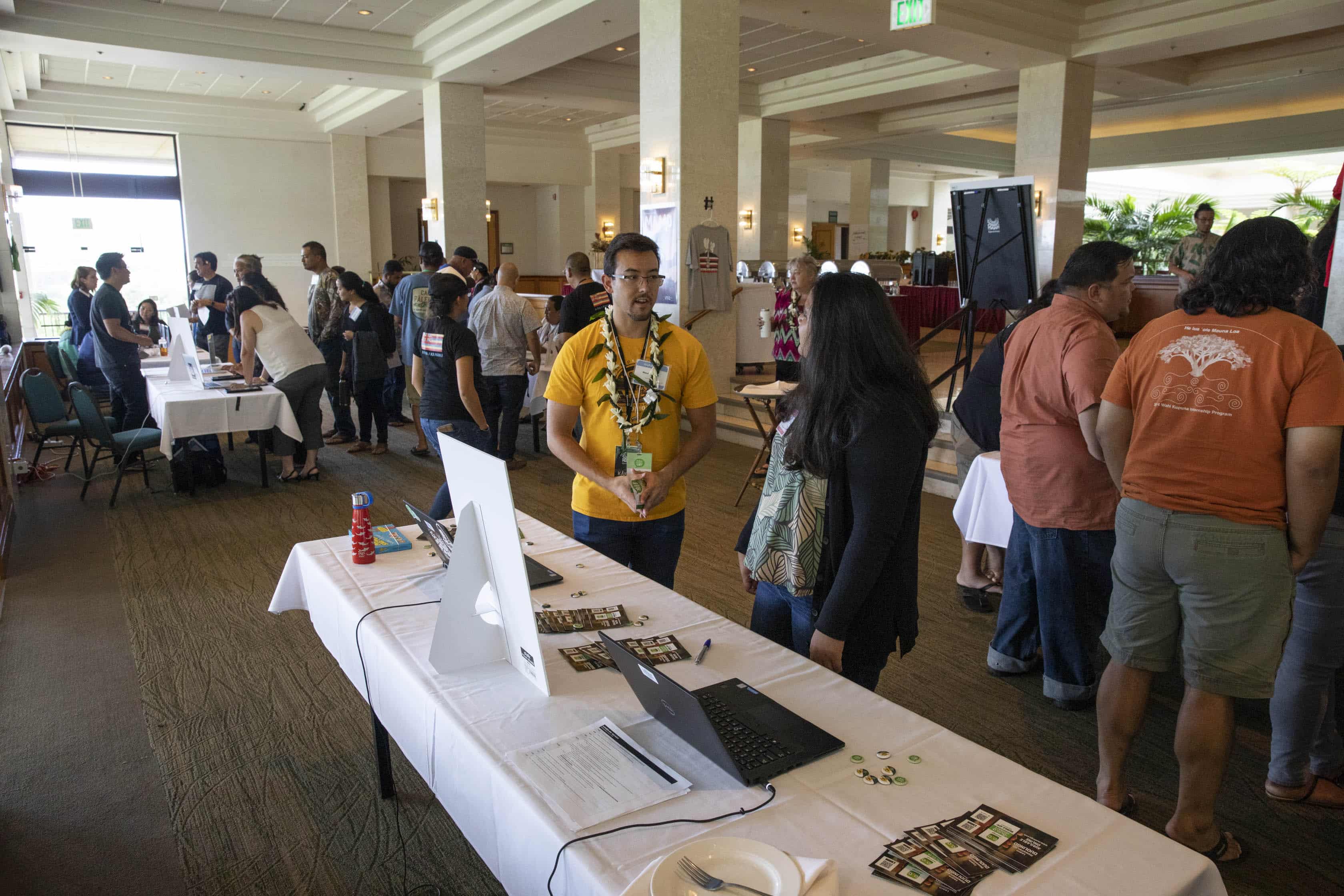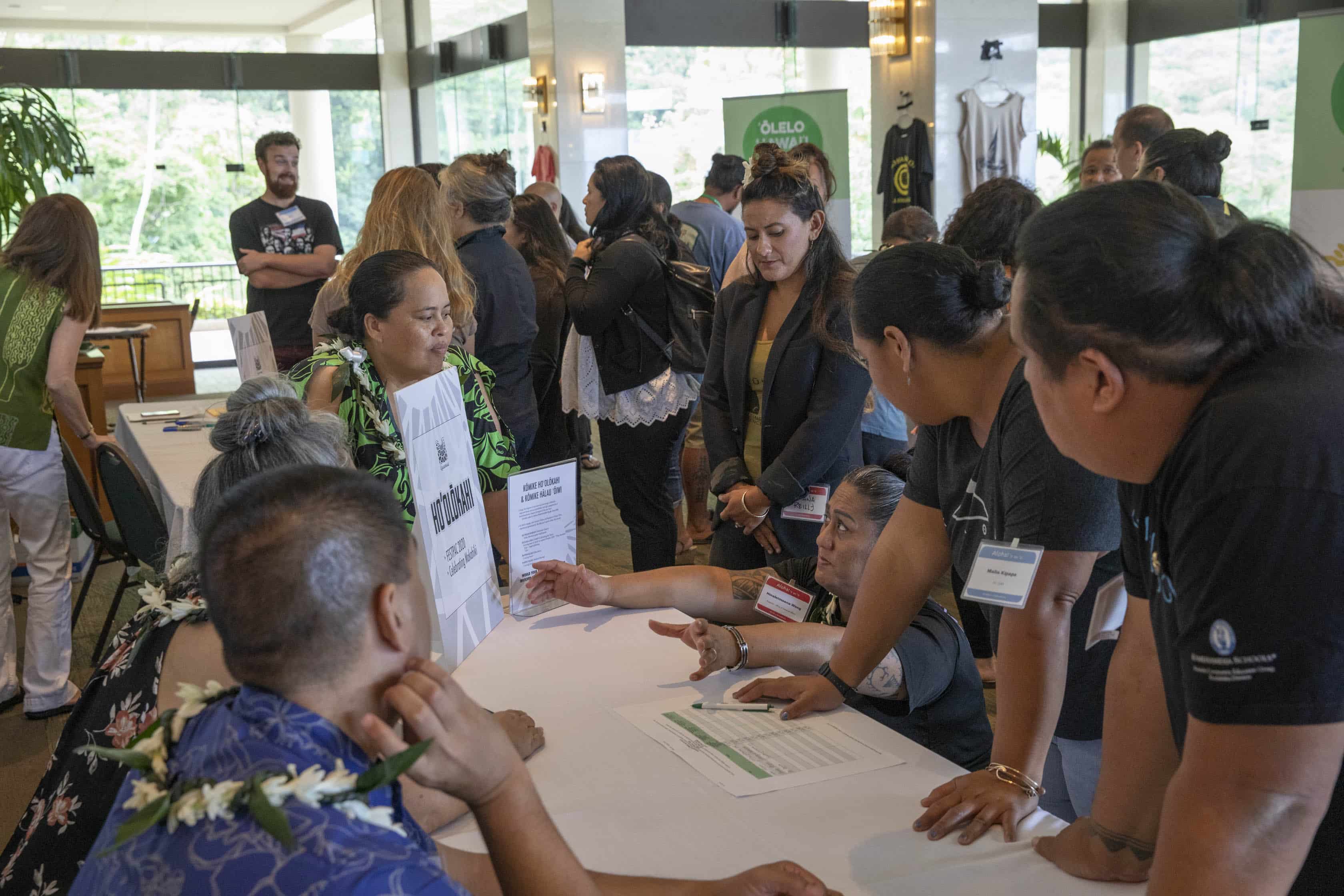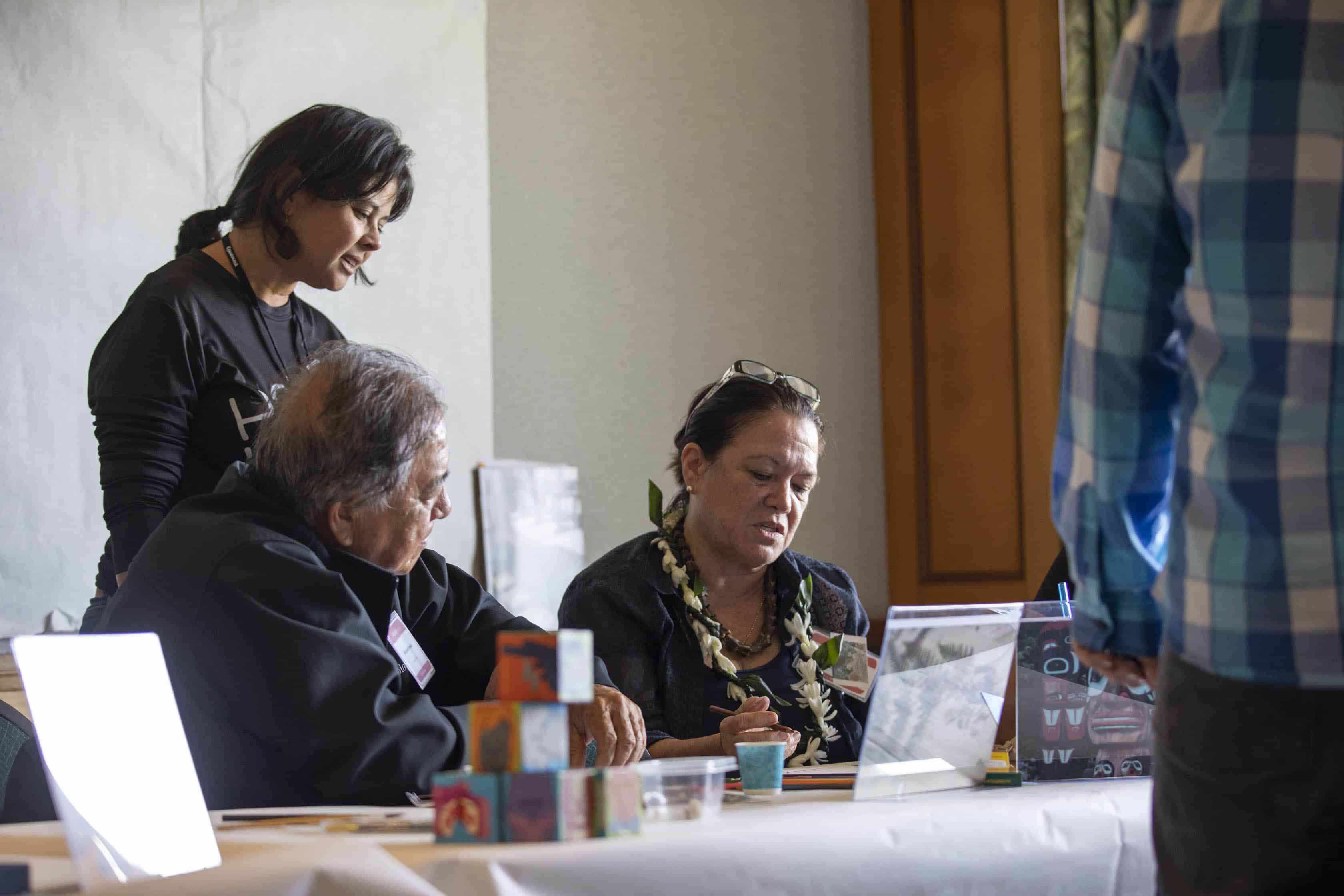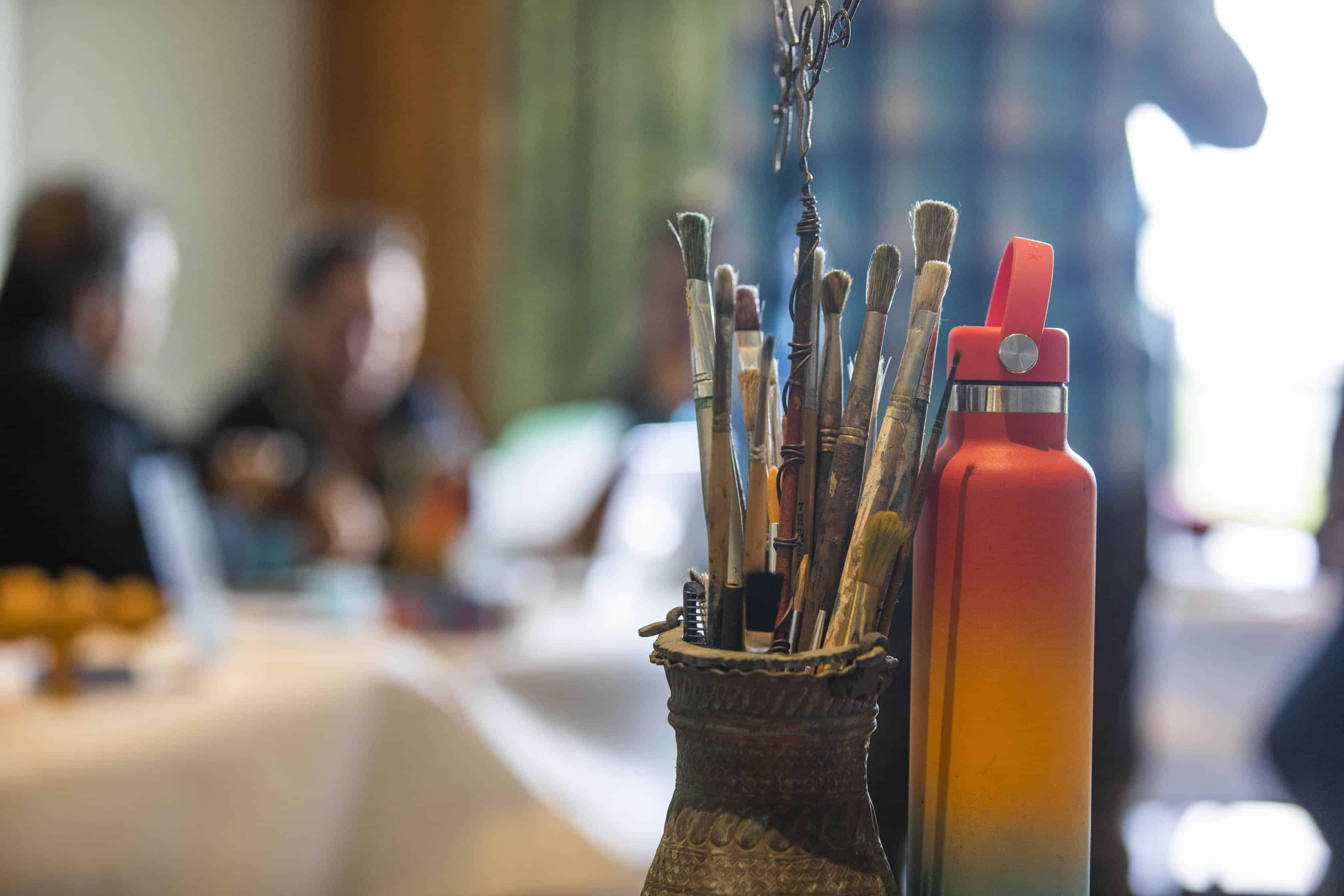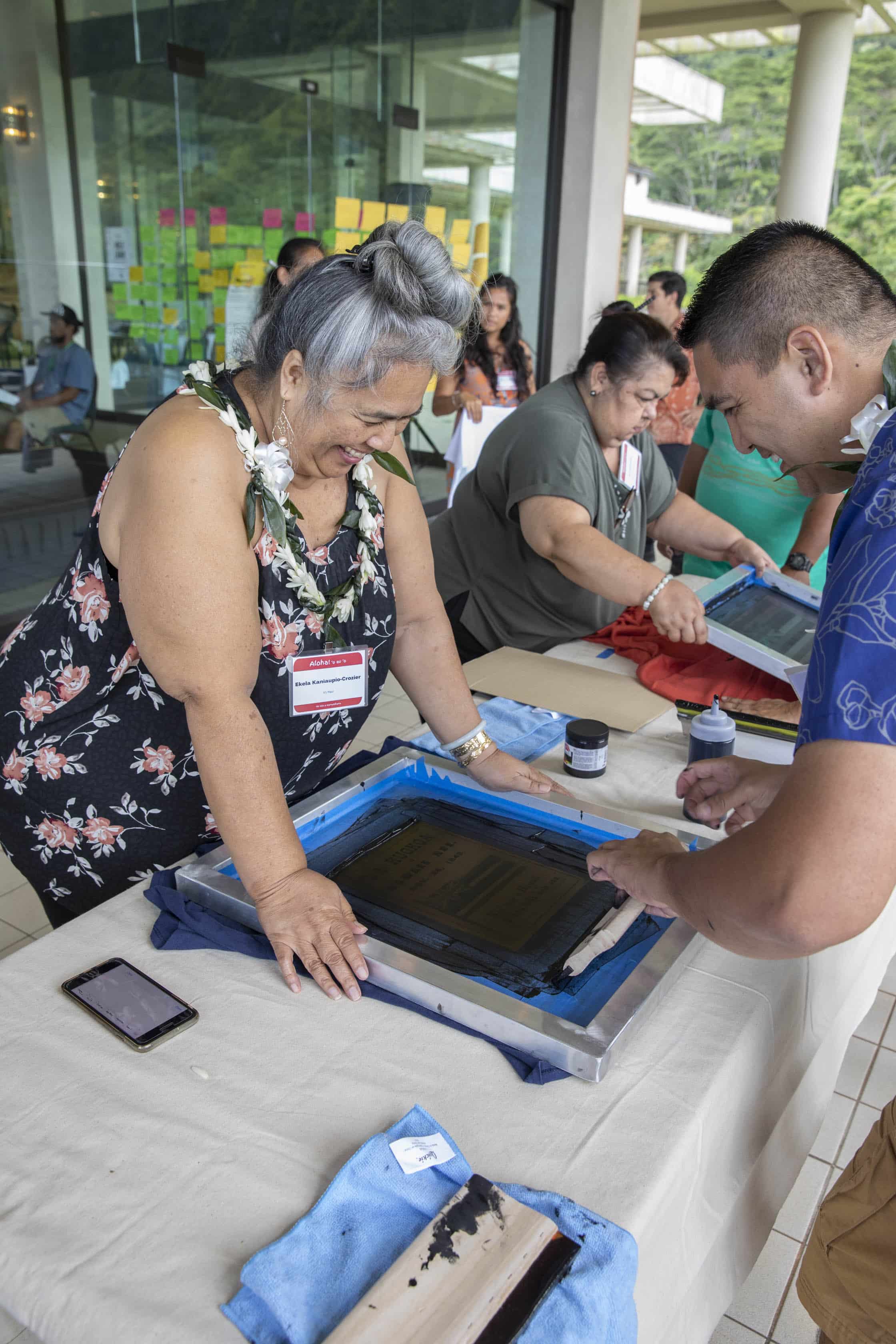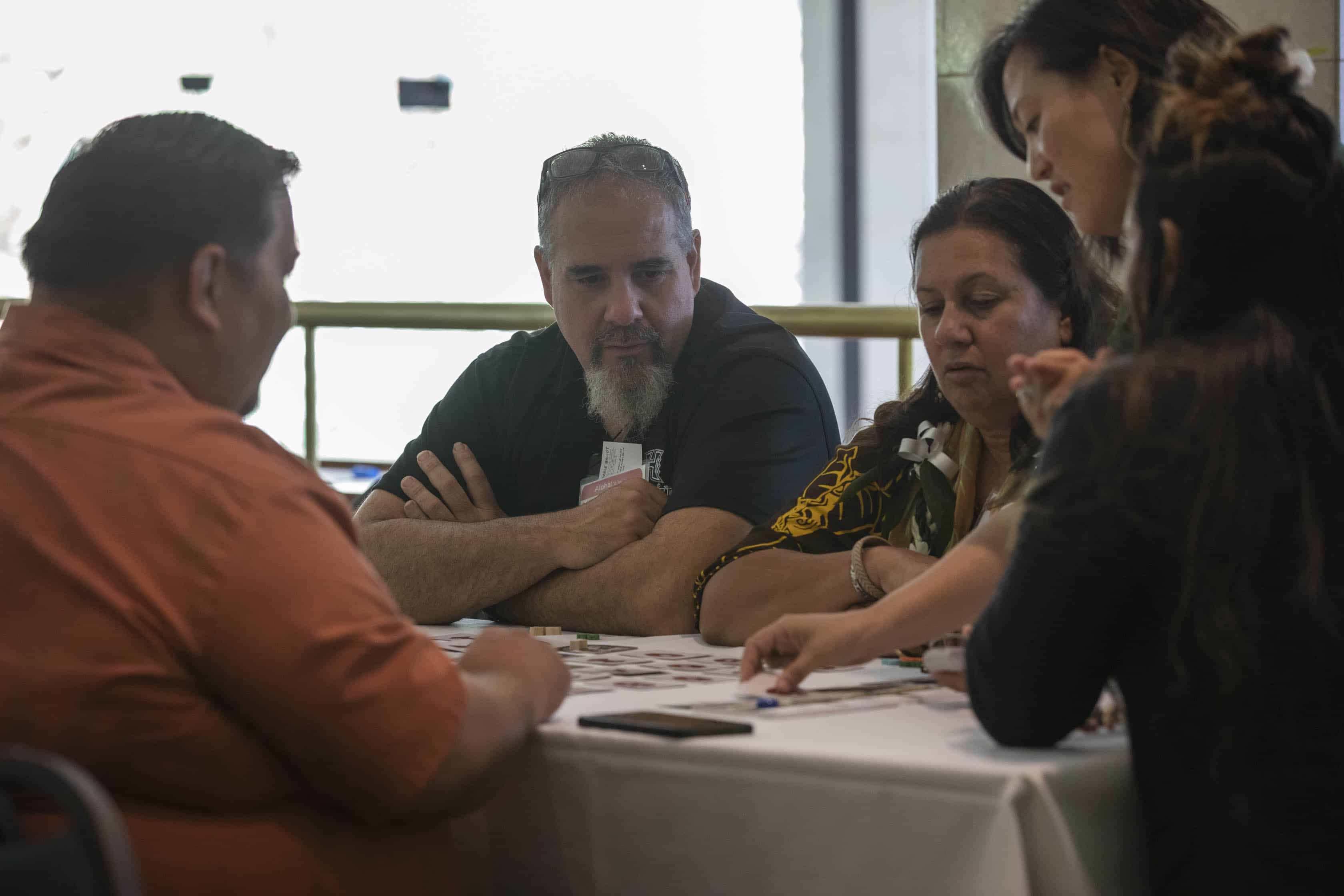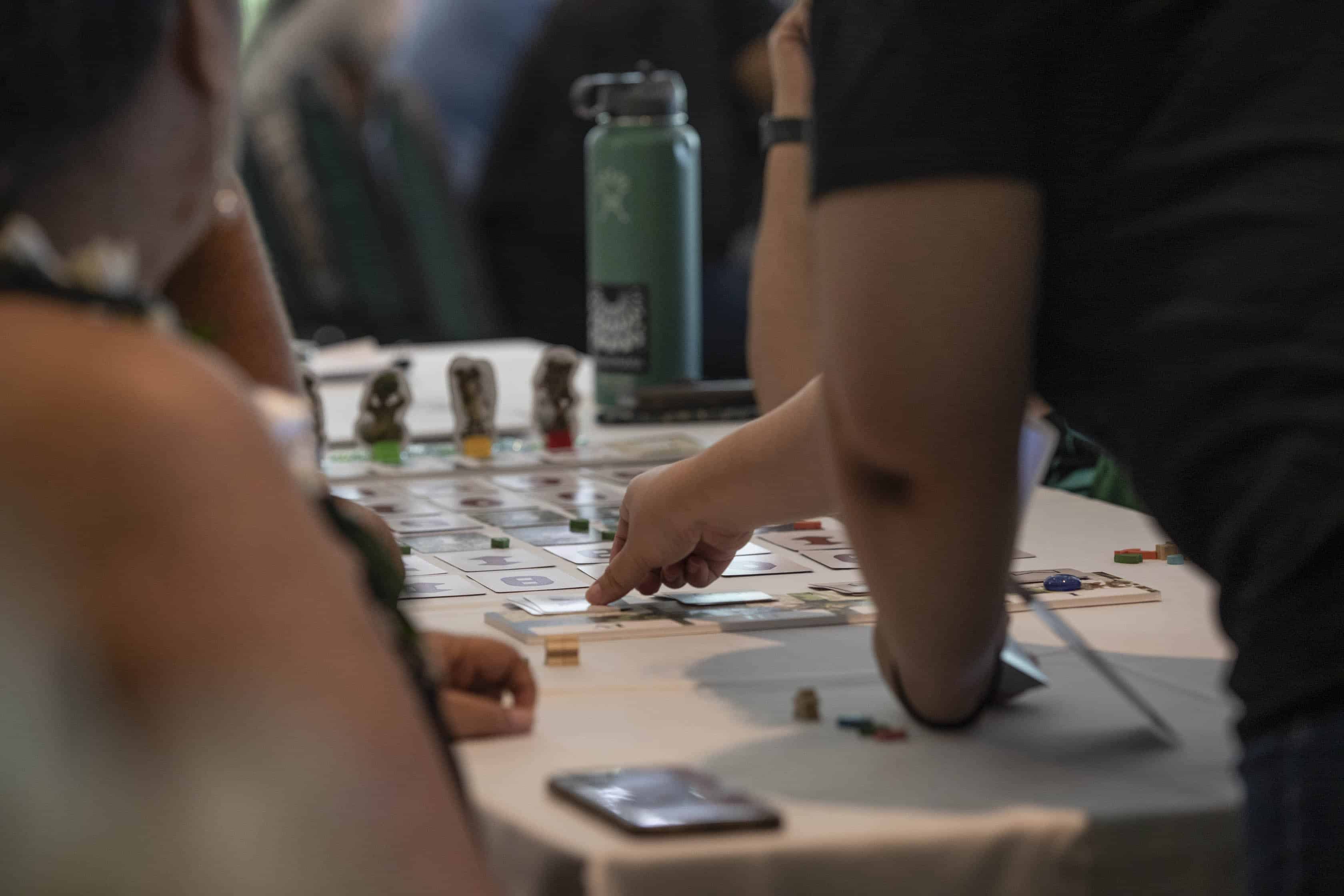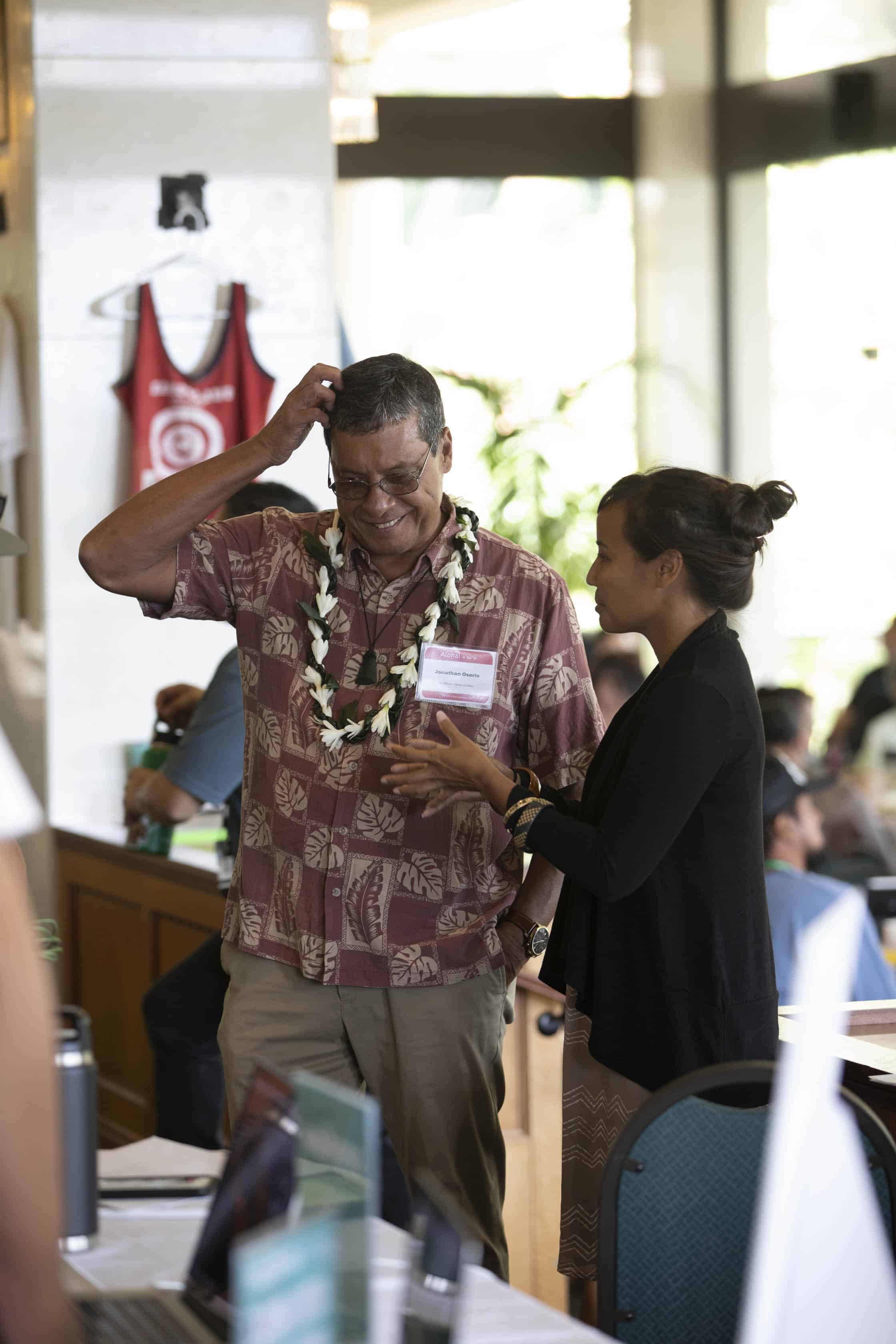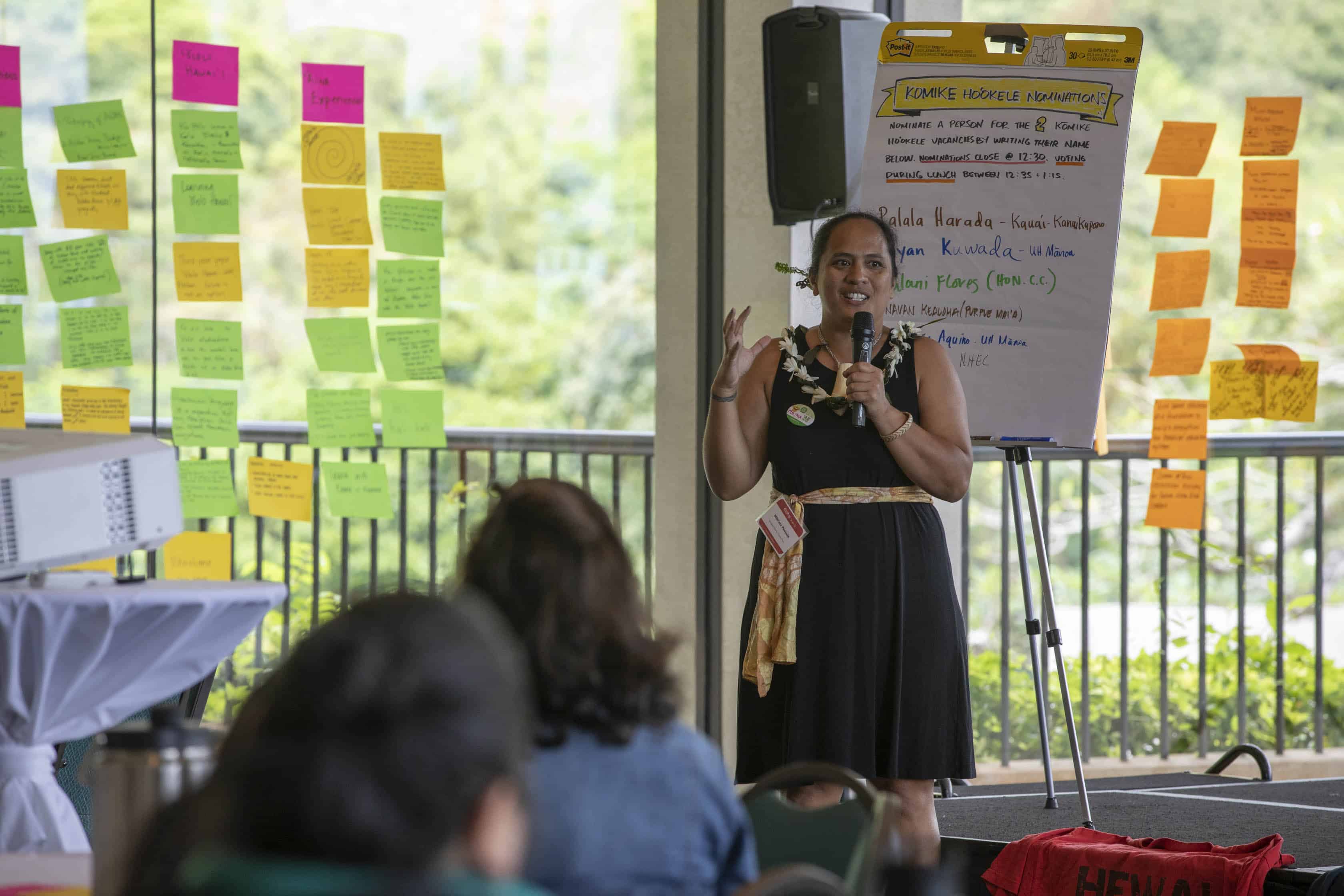JULY 12th, KULA HAWAI‘I NETWORK MEETING – KO‘OLAU, O‘AHU
PARTICIPANTS
On July 12, 2019 127 educational leaders and supporters came together to review Kanaeokana’s progress and to harness their collective intelligence to guide their work going forward. Here’s a link to the slide deck of the meeting to get an in-depth perspective. For a quick overview, please see the table below.
*Additional invitees had scheduling conflicts but voiced an interest in joining future meetings.
ACTIVITIES
Here’s a summary of the day’s activities:
| ACTIVITIES | |
|---|---|
| New Participant orientation | Setting the stage for new members of Kanaeokana, Kōmike Hoʻokele members Mikiʻala Pescaia and Malia Nobrega-Olivera welcomed participants who were joining ʻAha Kūkā for the first time.
What has Kanaeokana been able to accomplish? The Kanaeokana Project Dashboard organizes work in high priority kōmike, using technology to promote transparency and communication. |
| Wehena: Pule, ‘Ike, Honua | Grounding us to Kāneʻohe, Koʻolau, our ʻIke Honua was led by Kaipoʻi Kelling: Kumu at Ke Kula ʻo Samuel M. Kamakau, mahaiʻai, haku mele, kuleana land owner in Hāʻikū. The group sang together “Kāneʻohe” by Abby Kong and Johnny Noble.
Kōmike Hoʻokele nominations were opened for decision making participants (those wearing red nametags) to offer possible names for consideration. |
| Plenary: Mele and Mo‘olelo with Jon Osorio | Jon Osorio, Dean of Hawaiʻinuiākea School of Hawaiian Knowledge at UH-Mānoa, scholar, advocate for Hawaiian self-determination, and prolific musician, provided a stirring performance and presentation on aloha ʻāina. Recalling stories of solidarity and the role of mele in honoring wahi pana, Jon provided valuable insights on what it means to be in pilina with the ʻāina. Reflecting Kanaeokana’s Nuʻukia and Ala Nuʻukia, Jon’s manaʻo provided a foundation for the day, particularly how we connect aloha ʻāina to current events. |
| Advocacy decision making | Kōmike Advocacy distributed an article entitled “10 Questions About Mauna Kea Whose Answers Might Surprise You” to provide critical information about TMT’s impact. Recognizing the Mauna Kea situation and Kanaeokana’s standing policy position, members of Kōmike Advocacy invited Kanaeokana participants to vote:
“Should we ramp up our Kanaeokana advocacy committee and media efforts given a) the urgency of the current situation, and b) Kanaeokana’s explicit policy position supporting the protection of Mauna Kea?” With 62 in favor and 1 opposing, Kanaeokana received an overwhelming affirmative vote to ramp up efforts around Mauna Kea. |
| Fulfilling our Kanaeokana nu‘ukia (vision): Strengthening our lāhui, growing aloha ‘āina leaders | The theme of aloha ʻāina carried through into the next activity, which posed the question, “How do we strengthen our lāhui and grow more aloha ʻāina leaders?”
Through individual reflection, ʻAha Kūkā attendees were invited to reflect on what transformational and resonating/amplifying experiences moved them along their journeys of becoming aloha ʻāina leaders, jot these experiences down on sticky notes, and post them for group viewing and processing. During a gallery walk, attendees grouped and labeled the experiences. In table talk, attendees discussed these two questions:
|
| Fulfilling our Using the arts to connect more of our lāhui: Amplifying and resonating transformational experiences | How can the arts play a significant role in growing aloha ʻāina leaders?
Two sessions of participatory, creative, and practice-based breakouts introduced ʻAha Kūkā attendees to examples of amplifying and sustaining transformational experiences. Imagine applying these activities to your contexts and/or collaborating with others to create larger community events incorporating what inspires you today! Breakout sessions included:
|
| Kōmike Hoʻokele voting | Hoʻomaikaʻi to our newly selected Kōmike Hoʻokele members!
|
| Connecting to the ongoing work of Kanaeokana: Engaging in the “hands on” stations | ʻAha Kūkā attendees used this time to familiarize themselves with the work of Kanaeokana via kaunoʻo (learning centers), an interactive way to stay connected to what’s happening and what’s coming up.
Stations
|
| Putting what you experienced in action:Time to work with others to begin planning | To wrap up the day, ʻAha Kūkā attendees were invited to work together in their kula/hui and with a regional team to create community events that inspire and support aloha ʻāina. This time was used for initial planning to hopefully jumpstart conversations, spark ideas, and connect experiences from the day in order to bring transformational or amplifying experiences to haumāna, ʻohana, staff, and communities. |
| Kanaeokana Pau ka hālāwai: Mele Lāhui | The ʻAha Kūkā had a chance to explore via three modes what’s been happening in the six Kanaeokana kōmike hoʻokō (standing working group committees).
The goal of this exercise was to allow all ʻAha Kūkā members to become apprised of the work of each kōmike hoʻokō and to then be prepared to choose which kōmike they wanted to jump into for the next activity. |
NEXT STEPS
- Save the date! The next ‘Aha Kūkā will be taking place on July 12th, 2019.
- The six kōmike will continue meeting to forward their work streams.
- The Kōmike Ho‘okele will be meeting prior to the next Kanaeokana Plenary Meeting.
- Have fun with Slack, download the app to your phone! Slack is useful for project communications and where we provide updates and announcements.

